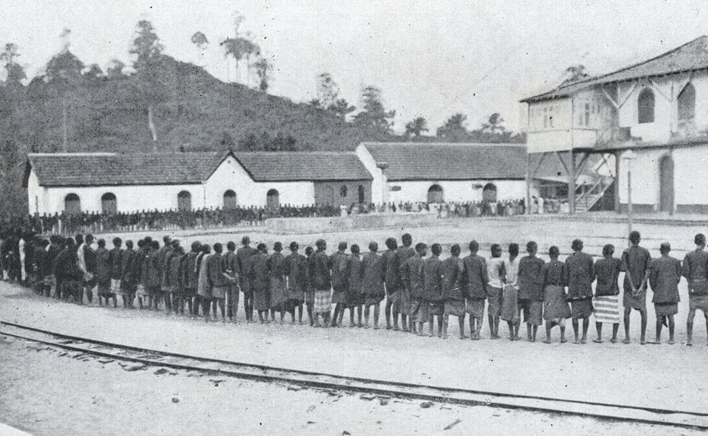
In April memory traces a link between the two film screenings. On 18th April, we will screen "Visages, Villages", by Agnès Varda and JR, and on 19th, "The Song of Ossobó", by Silas Tiny. Everyday at 10:00 p.m., Cinema Passos Manuel.
In "VIsages, Villages", the latest film feature by Agnès Varda, the iconic French director gets together with the famous muralist JR in a kind of road-movie though several towns in France. With a van-camera they stop here and there, taking portraits to the local inhabitants in giant formats, sticking it to the walls. A reflexion on photography, and, sure, cinema, as memory producers, with an cool and sometimes comic approach. The academic professor and artist João Sousa Cardoso will present the screening.
It's also through memories that Silas Tiny comes back to his home country, São Tomé e Príncipe, to collect some vestiges and witnesses from the Portuguese colonial times. There, thousands of people were forced to work in cacao's farms, namely two of the majors: Rio do Ouro and Água-Izé.
April's Cycle
10:00 p.m., Cinema Passos Manuel
April 18th
Visages, Villages, by Agnès Varda + JR
2017, FR, 93', M12
Presentation by João Sousa Cardoso
Agnès Varda, director which unique gaze and work ensure her an infinite number of fans around the world since the 50s, and JR, the famous photographer and muralist, with more than one million of followers in Instagram, have more in common than we ever imagine. Both share a passionate life for images, about how they are created, exhibited and shared. Agnès choose to explore her passion through the cinema and documentary while JR do that through emotional photographic installations in outdoors. When JR, a long-term fan, met Agnès in his home, at Daguerre Street, they immediately recognized that they had to work together. "Faces, Places" documents that warm trip through rural France and the tender friendship built during that way.
April 19th
The Song of Ossobó, by Silas Tiny
2017, PT, 99’, M12
Within the program 6.doc (partnership with Doclisboa)
“Rio do Ouro and Água-Izé were among the largest cocoa plantations in São Tomé and Príncipe during the Portuguese colonial era. Thousands were marked by forced labour equivalent to slavery. I return to my country to find the traces of that past.” Silas Tiny